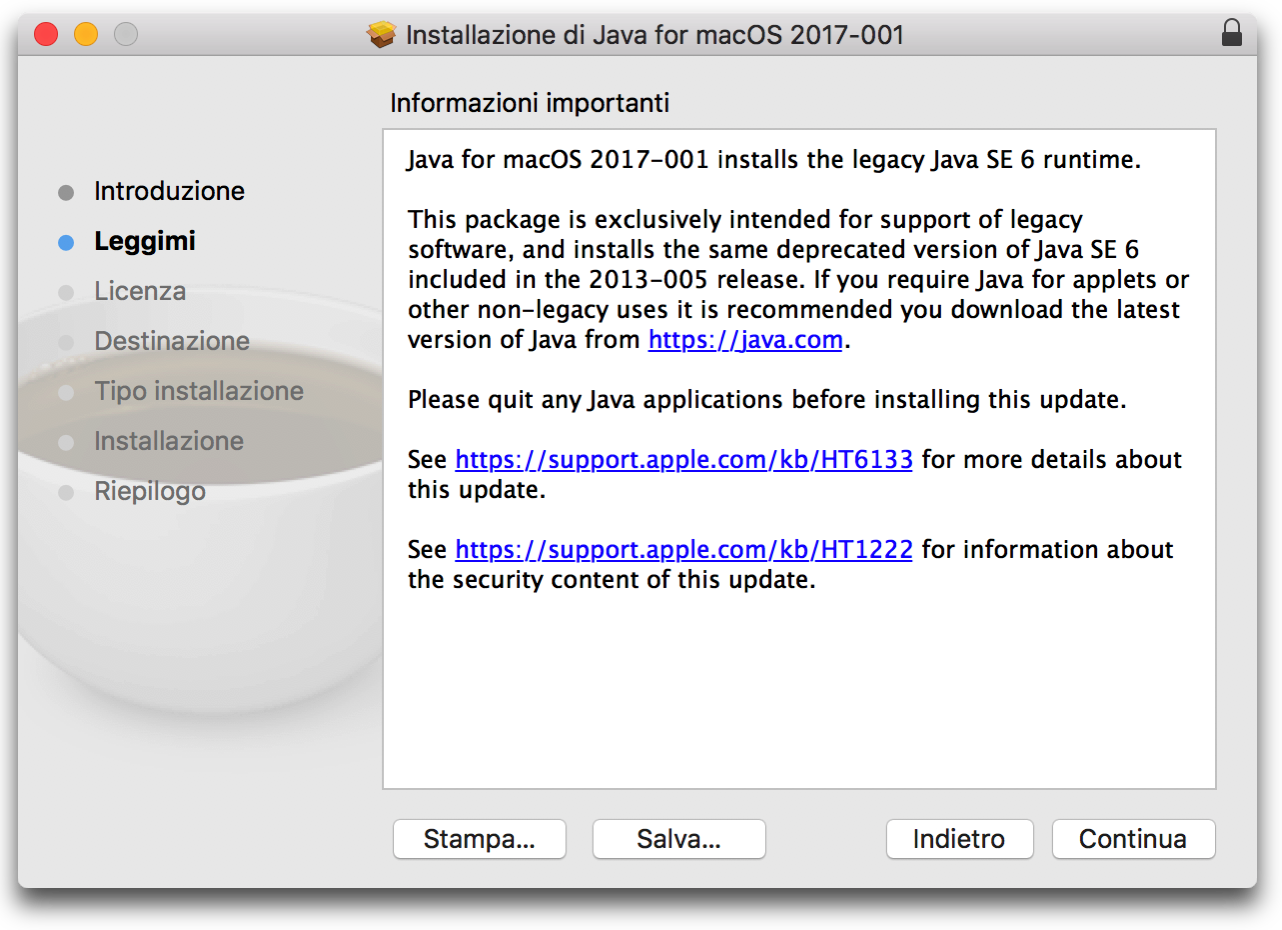Install Java 6 For Mac
The following are the system requirements for installing the JDK and the JRE on macOS:
Install Legacy Java Se 6 Runtime For Mac
1) brew cask install java 2) java -version java version '1.8.0131' Java(TM) SE Runtime Environment (build 1.8.0131-b11) P.S - Cask is an extension to Homebrew that is intended to manage large Mac binaries and graphical applications, but using the Homebrew interface. Installing Java on Mac. We will install OpenJDK in our Mac OS. It’s free and you don’t have to worry about licensing that comes with Oracle JDK build. 1.1) Downloading Java for Mac OS. Go to the latest JDK GA release page and download the tar file for Mac OS. After installing Java for macOS 2012-006, can I continue to use Apple's Java 6 alongside the macOS JDK for Java 13? If you want to continue to develop with Java 6 using command-line, then you can modify the startup script for your favorite command environment. The following steps show you how to install a non-notarized JDK or JRE. Note: These steps use the JDK 8u231 macOS installer as an example. These steps apply equally to all other JDK and JRE releases. Installing the JDK Using a.dmg File. Double-click on the.dmg file to begin the installation.

How To Install Java 6 For Mac



Install Java 6 For Macbook
Any Intel-based computer running macOS.
Administrator privileges.
You cannot install Java for a single user. Installing the JDK and JRE on macOS is performed on a systemwide basis for all users. Administrator privileges are required to install the JDK and JRE on macOS.
When you install the JDK, it also installs the JRE. However, the system will not replace the current JRE with a lower version.
To determine the current JRE version installed on your system, see Determining the JRE Version Installed on macOS. To install an earlier version of the JRE, you must first uninstall the current version. See Uninstalling the JRE on macOS.
When you install the JRE, you can install only one JRE on your system at a time. The system will not install a JRE that has an earlier version than the current version.
To determine the current JRE version installed on your system, see Determining the JRE Version Installed on macOS. To install an earlier version of the JRE, you must first uninstall the current version. See Uninstalling the JRE on macOS.
Note:
Installing a JRE from Oracle will not update
java -versionsymlinks or addjavato your path. To do this, you must install the JDK.